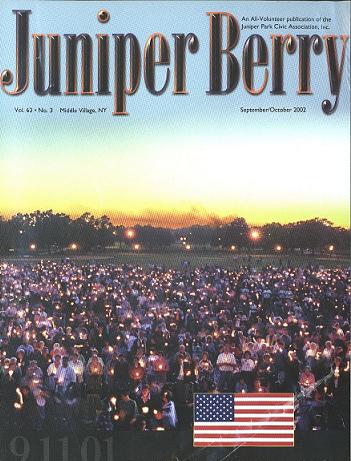We live close to one of four areas on earth well endowed with mineral matter and that area is New York City which has over 172 varieties of minerals in its bedrock subbasement. Most of our variety comes from glaciers which carried untold tons of rock debris from the north.
Excavations anywhere in the area disclose layers of assorted sand, silt, gravel and boulders of various size. Much of this material was carried here for hundreds of miles. At least twice in our geological history an ice sheet or continental glacier covered our community. The first advance was here some 15,000 years ago. When the sheet withdrew it left a line of boulders and rock debris at the point of withdrawal. These are called Glacial Moraines. The ice moved forward over this area, then halted in the line of hills on the ridge (the ridge being the moraine) along Highland Park, Cypress Hills and Forest Park. When the ice retreated, the land looked like Antarctica today, bitter cold with no animal life and no plant life. Good spots to view glacial handiwork are Forest Park, Evergreen Cemetery, Cypress Hills Cemetery and All Faiths Cemetery. When the glacier was melting the rising ocean water invaded any area that was below sea level. Hence the body we call Long Island Sound was created.
Our most famous local landmark of early days is Arbitration Rock left here by the glaciers. In the 1600’s, residents of Bushwick and Newtown contested the boundary lines between the two towns, resulting in a one hundred year dispute over what became known as “the Disputed Territory,” When the city graded the street in 1930, the rock became buried. Not long ago the rock was dug up and moved to the backyard of the Onderdonk House, home of the Greater Ridgewood Historical Society.
The area around Juniper Valley Park was known since the middle 1600’s as Juniper Swamp. Juniper Valley Park is a fairly recent name for the area. The swamp was roughly 100 acres between Middle Village and Maspeth. A large quantity of peat was found there.
The peat deposit might have been formed during the ice age. Depressions were caused by large fragments of ice separating from the ice sheet and they became buried in the sand. The buried ice melted very gradually and a swamp replaced the ice. Moss became established and then larger luxuriant growths of vegetable matter. It is estimated that thousands of years were needed to form a bog as deep as the one in Juniper Swamp. The peat in Juniper Swamp was evaluated at 90% organic matter as compared to 40% in domestic samples and 60% in English peat.
The City discovered the peat, the WPA dug it out and Robert Moses used it in the parks and on parkways. The 200,000 cubic yards of peat dug out was worth over one million dollars. This was four times as much as the city had paid for the land.
Peat is valuable because it retains moisture in the ground, particularly where clay conditions would otherwise wreak havoc on the roots of grass and shrubbery.
In addition to its use in the city parks, contractors bought some of it to use on the Belt Parkway, Northern State Parkway and Jones Beach State park. It was also used to improve Flushing Meadow Park as the future site of the New York World’s Fair of 1939-1940.


